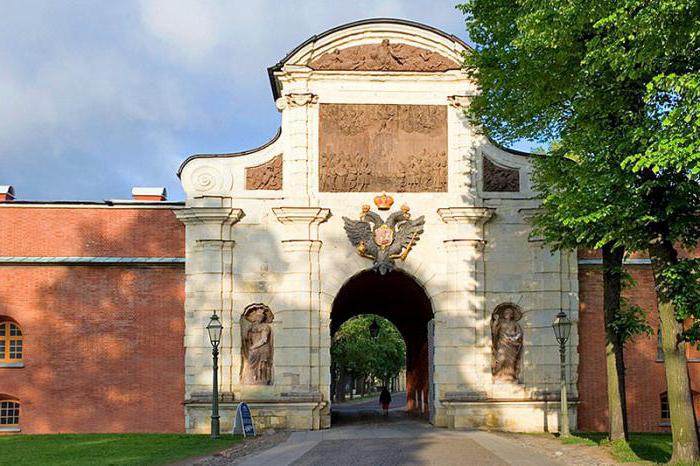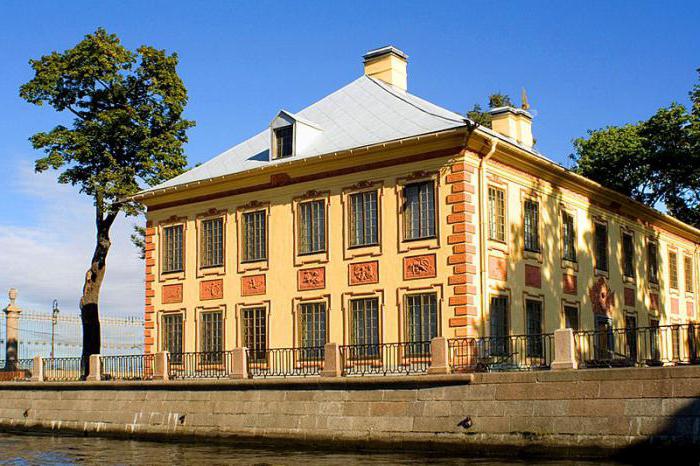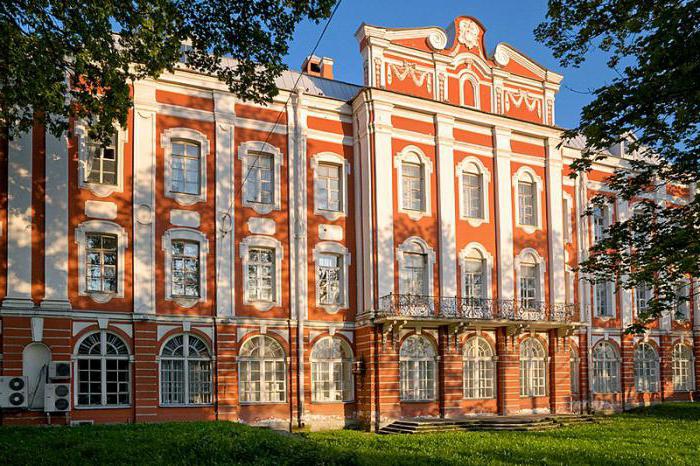The first architect of St. Petersburg, Domenico Andrea Trezzini, lived a rather long life. In Russia, he found a new homeland, name and family. He created a number of significant architectural structures in the Northern capital that influenced Russian architecture as a whole. And his name today most often can be seen in the booklet, where schoolchildren indulge in understanding "how many compasses Pyotr Lopushin and Domenico Trezzini bought". But the biography of the architect is part of Russian history.
Childhood and family
Very little is known about life and especially about childhood Domenico Trezzini. He was born in the small Swiss village of Astano, near the Lugano of the Tessin canton in 1670, a more accurate date is unknown. The family came from Italian nobles who once lived in the city of Trezzini. At the time of the birth of the boy, his parents lived in Switzerland and had a very modest income. But the family was proud of its origin, and a clan coat of arms in the form of the Andreevsky cross of the French form was placed over the entrance to their house.
Education
Despite the fact that the Domenico Trezzini family was financially constrained, they still decided to educate the boy. The canton of Tessina, in which a lot of immigrants from Italy lived, was famous for its art and architectural schools. About 150 quite famous architects in Europe came out of this area. Therefore, the Trezzini family did not puzzle for a while about what profession to give to their son. When he completed his studies at a local school, his parents decided that Domenico needed to continue his education in order to get a decent place. At this time, Italy was the center of architectural education, there were two places of the center of educational institutions for architects: Rome and Venice. Since Venice was closer and cheaper, the choice fell on her. Domenico went to comprehend the profession in this city on the water and a few years later he received the coveted document confirming his qualifications. Now it remained to find a job.
Invitation from Russia
In Italy and in his native Switzerland, there was no work for Domenico Trezzini. At this time, the Danish king Christian Fifth began a large construction - he intended to build defensive structures around Copenhagen. While Domenico was traveling to Denmark, there was a change of power and the new king Frederic the Fourth did not want to hire Trezzini to serve. But Domenico still found a place and worked on the construction of fortifications for 4 years. In those days, a military alliance was concluded between Denmark and Russia and several Russian courtiers were in Copenhagen and were looking for specialists for the implementation of Peter the Great. Russian Ambassador Andrei Izmailov held talks with a novice architect, a specialist in fortifications. Trezzini was promised a high salary, "lifting" and a pay increase after he "shows his art." All this turned out to be more than tempting, and the young architect agreed to go to such an exotic country as Russia.
Fortifications
Russia urgently needed fortifications to protect its borders from the Swedes. But there were no specialists of this profile in the country, so the ambassadors also engaged architects and engineers abroad. In 1703, Domenico Trezzini set sail by boat from Copenhagen to Arkhangelsk. Then he got to the birthplace of St. Petersburg and settled in the Greek settlement. Different foreigners lived here and, according to the memoirs of contemporaries, no one better than Trezzini could solve their disputes and problems. The first project entrusted to the architect was Fort Kronshlot in the waters of the Gulf of Finland. He actively took charge of the work and for several months, despite the cold and unfamiliar language, unusual for the architect, his team was able to put in the fort. It was unusual for the Russian tradition of form and construction caused a lot of skepticism. However, the very first attack by the Swedes showed that the fort was defensive and this significantly elevated Trezzini in the eyes of Peter the Great. In honor of the victory in Narva, Peter decided to erect there the Triumphal Gate in the manner of the Roman tradition. This project he commissioned Trezzini. The powerful and ceremonial gates of Trezzini received the nickname "Petrovsky", they became a real monument to Russian weapons and really liked the Russian Tsar. And he ordered Trezzini to return to the place of construction of St. Petersburg and to engage in the construction of the fortress.

Peter-Pavel's Fortress
For several years, work has been carried out on Hare Island - the Peter and Paul Fortress was being built. Domenico Trezzini was sent to replace the deceased building manager of the Saxon engineer Johann Kirchenstein. By this time, the main wooden walls had already been erected, the new engineer had to complete the construction of the konverka on Gorodovy Ostrov, take up the reinforcement of the walls, find a way to reduce the wave load on the fortifications during floods and sieges. Domenico laid the first stone in the foundation of the brick walls and was actively engaged in construction. Peter and Paul Fortress later he will call the main building of his life. By order of Peter in the fortress erected gates "in the manner of the Narva", erected walls, build powder depots, barracks. All this is done very soundly and monumental. The king often visited the construction site and was pleased with its progress. Trezzini strengthened his position at the Russian court.

Trezzini and the Northern Capital
After the completion of the main works in the fortress Domenico Trezzini, whose biography is now forever connected with Russia, he receives an order for planning residential areas of the city. The architect’s buildings of that time have survived a little, but the drawings speak of the breadth and grandeur of the plan. The architect’s work began in the “wooden” period of the city, this did not allow the master to fully show his abilities, yet he was used to thinking and creating in stone. He was entrusted with more and more duties, which he performed with great responsibility. But Peter did not fulfill his promises, he did not raise the salary of the architect, although in the beginning he promised. But Trezzini did not complain, although sometimes he timidly asked for a raise. The architect will work on the arrangement of the Peter and Paul Fortress until the end of his life. But, besides this, the king entrusted him with other urban development tasks, which the engineer solved with honor. The first, not a military project of the architect was the cathedral in the fortress. Later, he began to engage in civil engineering and put a lot of effort and fiction into the layout of the Northern capital.

Peter and Paul Cathedral
In 1712, Domenico Trezzini began working on the project of the Peter and Paul Stone Cathedral, instead of a wooden church. Like the project of a stone fortress, the cathedral became a new word in Russian architecture. The church was entrusted with very serious tasks: it was to become a symbol of new Russia, the heart of St. Petersburg. The cathedral remained the tallest building in the historical part of the city until 2012 and is still the main sign of the St. Petersburg perspective. In an architectural sense, the cathedral is an absolutely Western European building. Its appearance is strict and concise, dominated by a multi-tiered bell tower. All magnificence is inside the cathedral. It housed the imperial tomb and a magnificent gilded iconostasis. The interior resembles the most luxurious ceremonial rooms of the royal chambers. Trezzini was able to embody in stone the idea of Peter - about striving for power and high spirit.
Vasilievsky island
The architect Domenico Trezzini in 1715 creates a plan for the regular development of Vasilievsky Island. Most of the buildings on his projects were not preserved, but the planning principle remained the same. Peter wanted to place the administrative quarter of his new government on the island and ordered Trezzini to prepare for this building. Today the building of the Twelve Colleges, designed by Trezzini, is an example of Peter's Baroque, the progenitor of which was the Russian architect of Swiss-Italian origin. Also, according to his project, Gostiny Dvor was built on the island, which did not survive to this day.
Own house
Peter the Great ordered the architect to build the first stone house for living and to settle in it “for example” himself. The building was located on the embankment of Vasilyevsky Island and became a "standard project", on the model of which later many years the development of St. Petersburg was carried out. It is an example of Peter's Baroque, which is characterized by a regular plan, rationality, a combination of order details with baroque elements, modesty and laconicism of the exterior decoration of buildings. The house later underwent a small restructuring, but today it is an adornment of the University Embankment.
Buildings in St. Petersburg
Domenico Trezzini built several buildings in St. Petersburg, some of them have not survived to this day. But you can see the breadth of the talent of the architect in the Peter and Paul Fortress, in the layout of Vasilyevsky Island and, first of all, its embankment, in the Summer Palace of Peter the Great in the Summer Garden, in the Alexander Nevsky Lavra complex. In 1726, he began to expand the Winter Palace of Emperor Peter at the Winter Canal, built the second building of the palace. Trezzini was also involved in the design and construction of the Gallery harbor.
The influence of Trezzini on Russian architecture
Several foreign architects, including Domenico Trezzini, had a strong influence on Russian urban planning. The sights of St. Petersburg in many respects got their appearance precisely thanks to his ideas. He decisively began to build on Russian soil in the European tradition. He, of course, studied the Russian principles of architecture, but greatly transformed them. And today, the fact that Petersburg looks so European is largely due to Trezzini. He also raised the outstanding Russian architect M. Zemtsov, who did a lot for the development of domestic architecture and the look of St. Petersburg.
Private life
Trezzini was married three times. The first time he was married on the road from Venice to Switzerland. In that marriage, he had three daughters. But he did not take his wife to Russia with him. Nothing is known about the architect’s second wife, but in this marriage he had the long-awaited son Peter (Pietro), whose godfather was Emperor Peter the Great. Later, Pietro will become an architect and will also work in Russia, with M. Zemtsov. The third marriage was the longest and most successful for the architect. Maria Carlotta - the wife of Domenico Trezzini, who lived with him until the end of his days, gave birth to an architect's daughter and four sons.
Legacy and memory
So far, 16 buildings of D. Trezzini in St. Petersburg have survived, but its main heritage is the layout of Vasilievsky Island and the formation of the image of the Northern capital. But the Russians were not very grateful, and the name of the architect survived several waves of oblivion. The first happened after his death and lasted almost 100 years. He was remembered when they began to restore the history of some St. Petersburg buildings. Then they forgot about him again for 30 years. A surge of interest in him appears in connection with the creation of the History of Russian art. And again, his name goes into oblivion for four decades. In the second half of the 19th century, people remember him more and more, study his style and constructive decisions. Today the name of Trezzini is inscribed in all textbooks on Russian architecture. Although, nevertheless, most of the inhabitants of Russia again begin to forget his name. Apparently, to correct such an injustice, a problem appeared in the school textbook on mathematics, in which Pyotr Lopushin and Domenico Trezzini shop. So, obviously, the problem is being solved to arouse interest among the younger generation in the history of the country and its culture. Despite the obvious merits of the architect, in Russia until now neither a street, nor a square, nor even an alley was named after him. While in his homeland in Switzerland, where he lived only 17 years, a major city highway was named in his honor. At the end of the 20th century, the idea arose to erect a monument to Domenico Trezzini in the Northern capital. And only in 2014 in St. Petersburg, finally, a monument appeared in honor of an outstanding architect. Trezzini’s creations today are part of a compulsory program in the study of Russian architecture, because without it the appearance of St. Petersburg and Russia would be different.